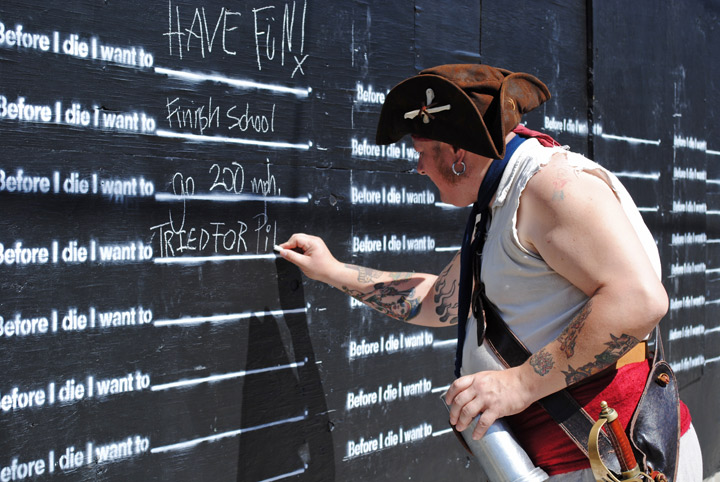Dear Working Preacher,
For more than five years we’ve worked hard to provide you with trusted and helpful resources at this website. Commentaries, podcasts, articles, videos, my weekly letter of encouragement, and more — all because, quite frankly, we love preachers and are so grateful for the essential ministry you carry out. Before I get to this week’s letter, I want to ask you to help us continue supporting your work by making a contribution to our ministry by clicking here now. Whether by becoming a sustaining member or through a one-time gift, your support is essential … and deeply appreciated. Thank you. Even more, thank God for you.
Okay, on to this week’s reading!
It occurs to me, Working Preacher, that there are essentially two directions one can go when reading the brief apocalyptic texts in the gospels like this one. First, we can take them as warning and start preparing for the end of which Jesus speaks, either by ordering our lives in a new way or by trying to figure out the events and calendar to which Jesus supposedly alludes. Or we can chuck all that and hear these words as an invitation to live now by faith and hope, inviting the prospect of future tribulation and trial only to sharpen our deep appreciation for the present God has created and given to us as a gift.
Okay, so maybe you guessed that I favor the second approach. 🙂 Three brief reasons and then a few words about what that kind of sermon might look like.
First, Jesus himself seems to speak against taking his words as a timetable. Here he alerts the disciples that lots of folks will come peddling warnings about the end. It’s as if he expect the Hal Lindseys, Harold Campings, and Tim LaHayes of the world and so warns us about them ahead of time. At other places in the gospels, Jesus is even more explicit, saying that, “no one knows the day or hour.”
Second, Jesus counsels believers not only not to be alarmed but also not to plan for those days. Instead, he invites us to a living and active trust so that we may believe a) that the various trials that come are actually opportunities to witness and b) that Jesus himself will equip us to speak and respond when such occasions arise.
Third, there is almost no question that Luke is responding to the crises of early Christian communities and addressing the words of Jesus to them in their hour of doubt and need. This isn’t a timetable — it’s a letter of comfort and courage and invitation. One that we can respond to most faithfully not by predicting the end but by seizing the present moment in which to share our faith and confidence in Christ.
With that in mind, what would such a sermon look like? Let me share two intersecting strands of my last week that connected for me in a powerful way when I read this passage.
First, I have started a series of blog posts about Christian worship. They’re meant as a teaching tool, available for anyone to use as they see fit, and arise from my own work in congregations over the years to help our people understand and get more from worship.
This past week I wrote the first piece on worship as liturgy. You no doubt have been taught, as I was, that the liturgy is “the work of the people.” I’ve always appreciated that, but also have been reading of late that a different way of translating that phrase is as a “work for the people” in the sense, more literally, of a “public work” — that is, something carried out to serve the public. I really like that, and I’ve been wondering about what our worship and preaching would look like if we intended them to serve our communities as public works projects.
Second, I stumbled upon a marvelous TED Talk by Candy Chang, an artist, designer, and urban planner who, in my opinion, regularly creates art intended to be a public work. In one such project, and deeply affected by the death of a dear friend, she transformed a dilapidated house in her neighborhood into a public chalk board where she invited people to respond to the question, “Before I die I want to …”. The answers were, by turns, poignant, honest, funny, and insightful. When I shared her work on my blog, one reader asked, “What would it be like to have exterior church walls with such lines as ‘I need someone to pray for ______________’ and chalk for people to be able to write their prayers?” I love that question! Later, a student I shared this with wrote and told me that they’d done something just like that at her congregation … and that it had been a huge success both in the congregation and surrounding neighborhood.
So I’m wondering, Working Preacher: Given Jesus’ promise of protection and confidence even during the most trying of situations, what is keeping us from imagining that through our worship and preaching God is at work fashioning and forming us as a public works project for the communities that surround us? If so, why not erect in the coming weeks a huge chalkboard — outside the church! — on which people are invited to offer their prayer requests with the promise that each Sunday as the congregation gathers for worship it will lift up these prayers?
We are fast approaching the holidays, a time that is joyous for some and immensely difficult for others and sometimes a bit of both for many of us. This might just be a perfect time during which to offer ourselves as a public work for the community and believe that Jesus is indeed giving us “words and wisdom” that we might seize this time as “an opportunity to testify.”
You’ll no doubt have your own thoughts and creative ideas about how to shape sermons and worship as a work for the people, so please accept these thoughts as just one suggestion. However you may decide to engage these challenging texts, Working Preacher, know that I rejoice in your very public work and proclamation and that I hold you in prayer regularly. God is at work in you and through you for the sake of the world, and for that I give ceaseless thanks.
Yours in Christ,
David
PS: I’ll embed Candy’s six-minute TED Talk below. You can find more info about her project here.
PPS: Given the typhoon in the Philippines, I’ll put a link here to an article I wrote a few years ago on preaching after a natural disaster (written after the Haiti) earthquake.

